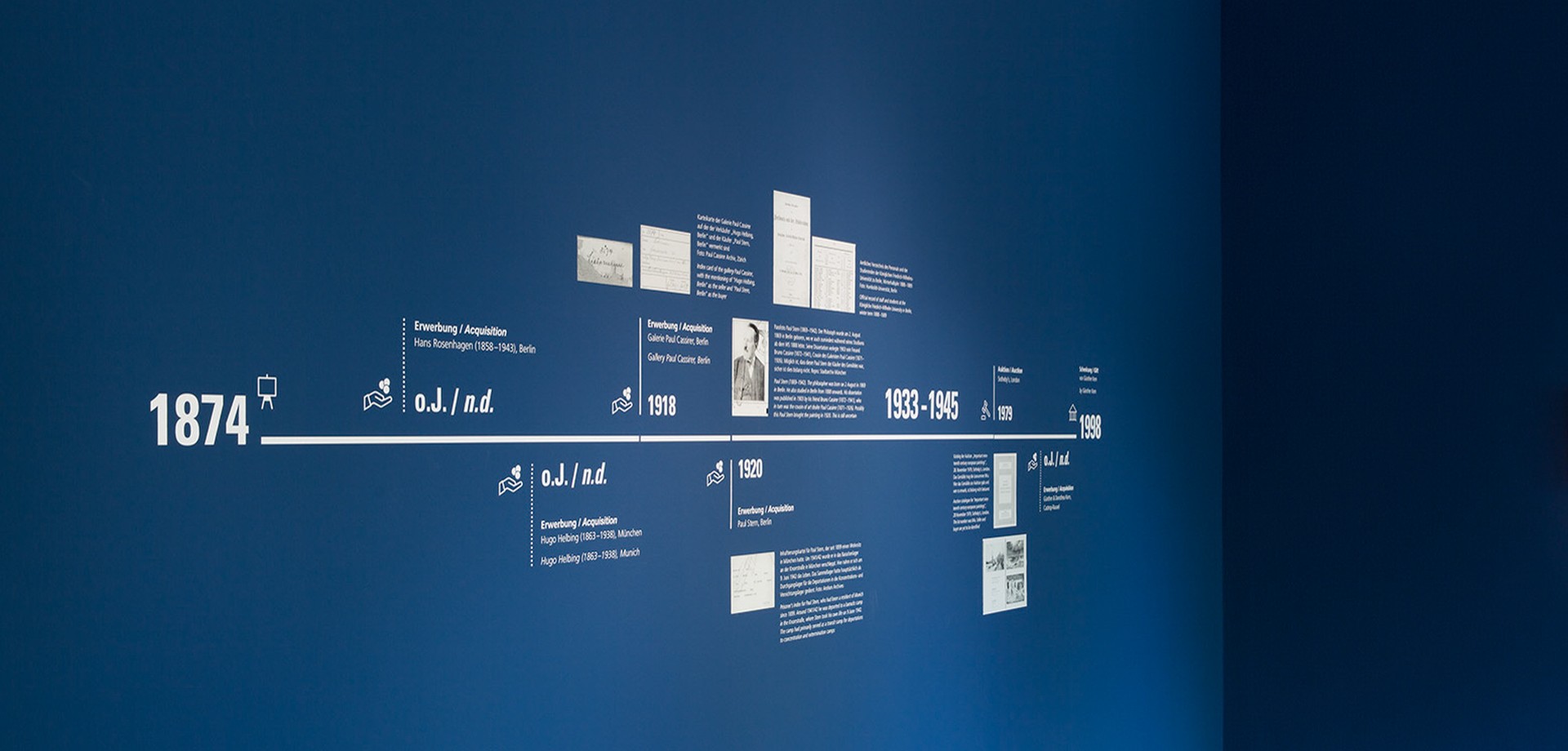
Provenance research
Searching for traces
Knowing the provenance of a cultural object is of great importance to its current owner, because the complete reconstruction of the ownership since the artwork’s creation is not only a proof of authenticity, but also establishes a link with former owners. Moreover, provenance research can lead to new scientific discoveries and thus ascertain the place of the object in our common cultural memory.
As countless cultural objects were looted and relocated during the Nazi era, the demand for information on the origins of artworks in public and private collections is growing. Many collections were torn apart and scattered far and wide as a result of confiscation, forced sales, or being abandoned by their owners. When these works came on the art market, their origin was
either concealed or forgotten. This is why the LWL Museum endeavours to determine the provenance of all works in its collections that were created before 1945 and entered the collections after 1933.
A programme launched in August 2018 with the financial support of an ad hoc foundation called Stiftung Deutsches Zentrum Kulturgutverluste enabled the museum to systematically examine all the paintings in the Modern Art collection and to present the results of the research work in the
temporary exhibition entitled "Eine Frage der Herkunft – Geschichte(n) hinter den Bildern". And in October 2020, a second programme was initiated to ascertain the provenance of the medieval panels and the paintings created from the 16th to the 19th centuries that belong to the museum’s collections.
October 2020–September 2022 provenance research programme
The research begins with an “autopsy” of the artwork, consisting in analysis of any numbers, notes, or stamps on the reverse as these can provide clues regarding previous owners or exhibitions at which the work was presented. In addition, the research team consults the museum’s archive, the relevant literature and, if necessary, national and international archives in hope of finding restitution files, descriptions of artists’ estates, and records kept by art dealers or private collectors.
At the conclusion of the programme, the research results for every work of art examined will be made available to the public on the Museum’s website. If it is ascertained that a given work changed ownership as a consequence of persecution by the Nazis, this will be reported to the Lost Art database. In the next step, the museum will negotiate a fair and equitable solution with the former owner or their heirs, in accordance with the Washington Principles.
By signing this international agreement in December 1998, the Federal Republic of Germany committed itself to the task of identifying cultural property looted during the Nazi era, identifying the rightful owners, and finding fair and equitable solutions regarding the future disposition of the artworks. In order to implement this obligation, the Federal Government, the regional governments, and the umbrella organisations of the museums adopted a joint declaration in December 1999 in which they commit to the tracing and restitution of Nazi-looted cultural property, in particular from Jewish owners.
